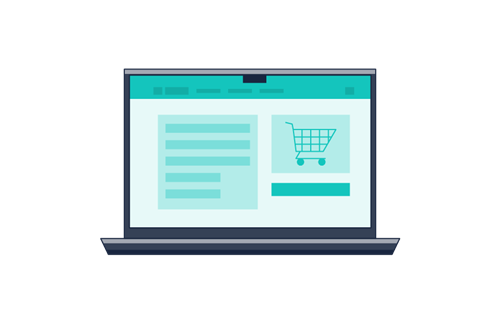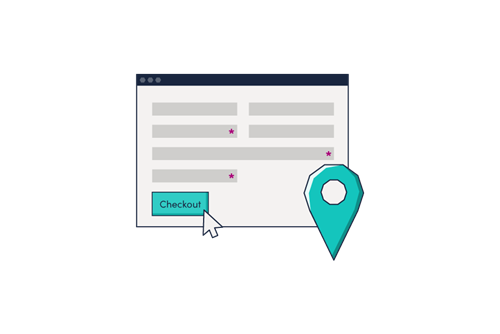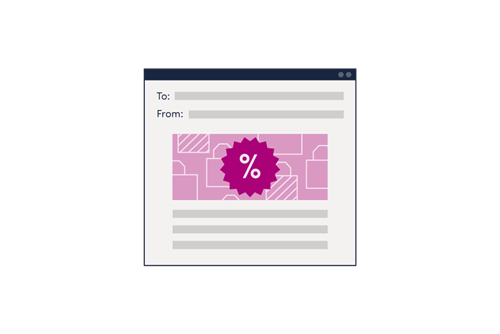The Black Friday 2022 Survival Guide

Sales may predominantly happen online now but with increased competition, supply chain issues, cyber security and now the cost of living to contend with, it’s certainly no less stressful for retailers.
So, to help you prepare your Black Friday strategy and get ready for this crucial trading period, we’ve compiled the Black Friday 2022 survival guide.

Increase conversions with improved UX
Making just a few small changes to your website could have an instant impact on your brand reputation, customer retention and conversions.
Let’s take a look at some of the ways you could improve UX, reduce cart abandonment and boost sales this Black Friday.
Enable guest checkout
Registering for an account is one of the top reasons cited for shoppers abandoning their cart. Even people who have an account frequently forget their login details so it’s easier for them to checkout as a guest rather than jump through hoops to recover a password.
After a successful purchase, offer guest customers the ability to log in or register to link their purchase to an account. You could include this in a follow-up email with some compelling incentives to sign up.
Get type ahead address validation
Another way to speed up the checkout process for customers is by integrating type-ahead address validation into your online forms. Rather than having to manually type an address or select it from a drop-down menu, customers can find their address in as little as three keystrokes, even if common typos are entered.
Not only is this the quickest and easiest way to capture address data, it’s also the friendliest solution for mobile commerce.
Launch the relevant keyword
By 2025, retail mcommerce sales are predicted to reach $728.28 billion and account for 44.2% of retail ecommerce sales in the US.
With a growing emphasis on mobile, it’s vital that retailers ensure that users can enjoy the same experience, regardless of device. So, making sure you enable the relevant keyboard is a must when it comes to mobile. For example, if you need a phone or card number, launch the numeric keyboard. Doing so will remove the frustration that comes with having to manually go back and find the keys users need.
Help customers find an address in one tap
Geolocation is the quickest, most convenient way for your customers to find their location on your mobile site. With just a single tap, customers can find their current location using their mobile device GPS signal. Latitude and longitude results are then returned, including the full and correctly formatted address. So, as well as enhancing UX by eliminating the need to type altogether, it also ensures you’re only collecting quality data.

Make sure special offers reach your customers
Email is one of the most effective ways of communicating Black Friday special offers with customers. But only if it arrives in their inbox.
GBG research shows that emails degrade at a rate of around 7% per year. That means, if you capture 100 emails accurately now, only 93 will be useable in 12 months’ time.
On top of that, there are over 3.9 billion email users worldwide but 17% of email address data is incorrect. This generally occurs because the user has made a genuine mistake or typo, or they’ve given a fake address.
Batch cleansing your email database regularly is therefore essential to help identify and remove invalid or outdated email addresses.
It’s also important to ensure emails are captured correctly at the point of entry. Allowing customers to free-type their email address without validation means you run the risk of collecting useless data, which can have a devastating impact on your customer marketing ROI.

Ease the burden of returned mail
With increased sales comes the increased possibility of deliveries going wrong. Whether it’s customers making a typo when entering their address manually or accidentally clicking on the wrong address in the postcode finder, the smallest user error can lead to a whole chain of events.
And it’s not just an inconvenience for the customer. Failed or late deliveries pose a significant cost to a business. In fact, the average cost of failed deliveries per retailer is almost $200, 000 a year. And even if the failed delivery was actually down to the courier, 78% of consumers still expect the retailer to resolve the issue.
Integrating an address validation tool at the checkout will ensure you’re only capturing the most accurate and up-to-date customer address data.

Improve fulfilment efficiency
A common issue retailers face is when the data they provide to couriers isn’t in the correct format for their systems. This can significantly slow the delivery process or worse still, lead to failed deliveries.
For example, your courier import specification might require postcode in uppercase as the first field provided and the county field populated. But if these aren’t mandatory fields in your online checkout, problems can arise in the fulfilment process.
Our automated DCoL solution is ready to receive and process files 24/7. Data is provided to us via SFTP for address reformatting and files are processed and returned to your exact specification. We can even append other useful delivery variables, such as UPRN, geocodes and DPS to enrich your data further.
Mitigate cybercrime risks
The growth in online shopping has left retailers and customers increasingly open to cyber-attacks. And this is heightened whenever there are peaks in shopping activity. So, you can see how cybercrime poses a big risk for businesses around Black Friday and Cyber Monday.
Having technology that automatically inputs and validates information accurately and securely not only minimises the risks of deliveries ending up at the wrong doorstep but the potential threats of online fraud and financial crime too.